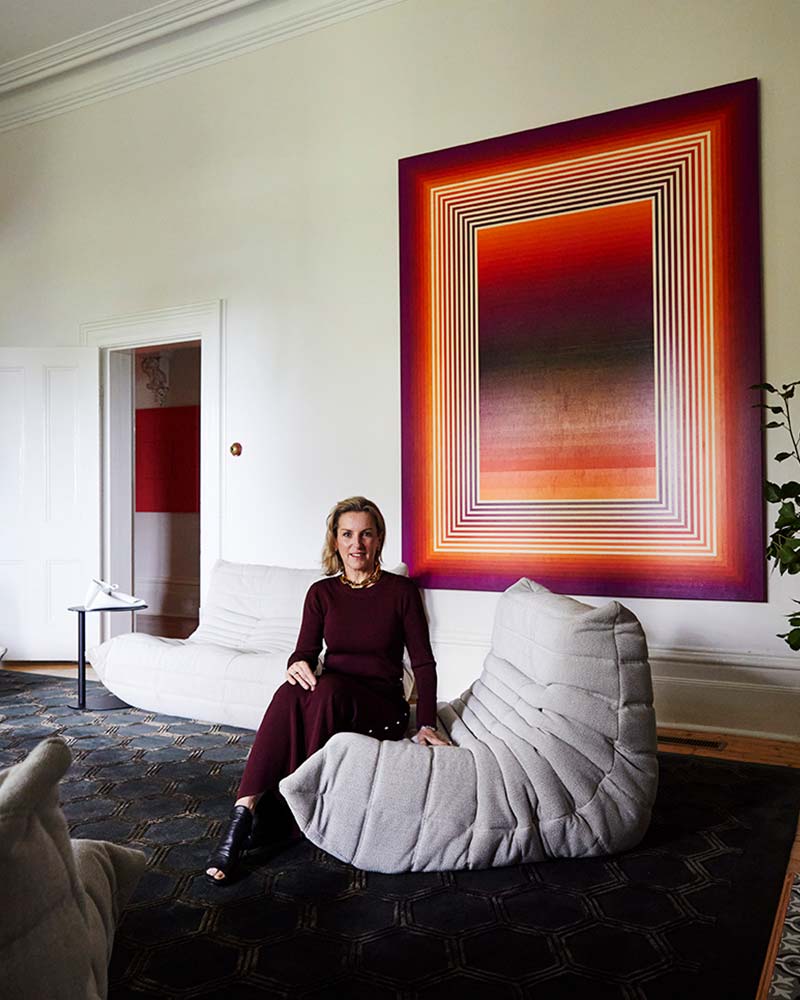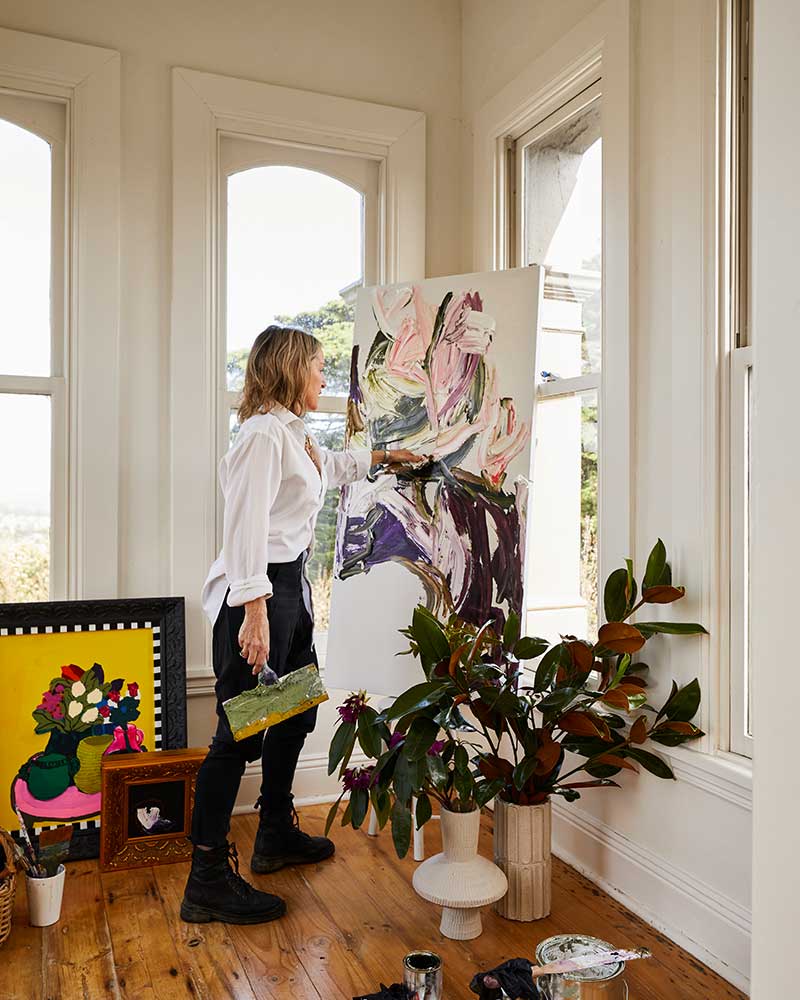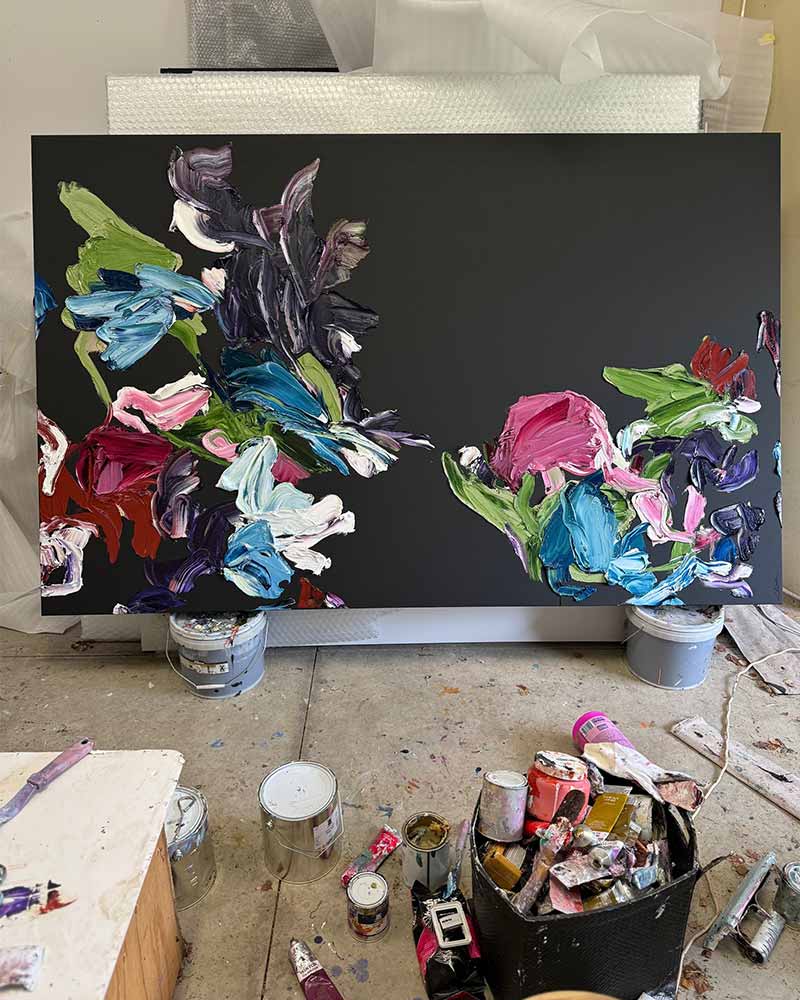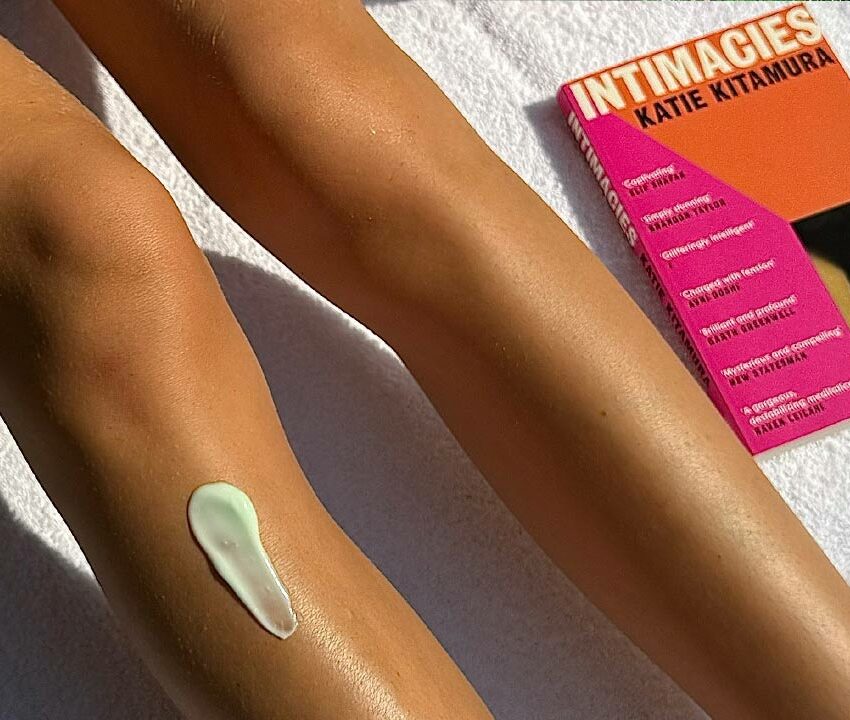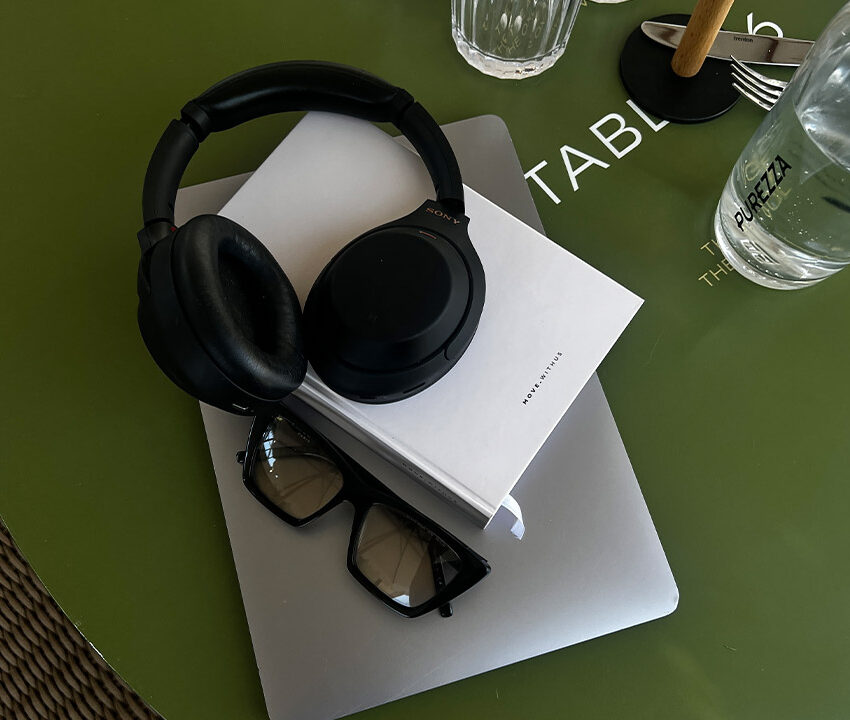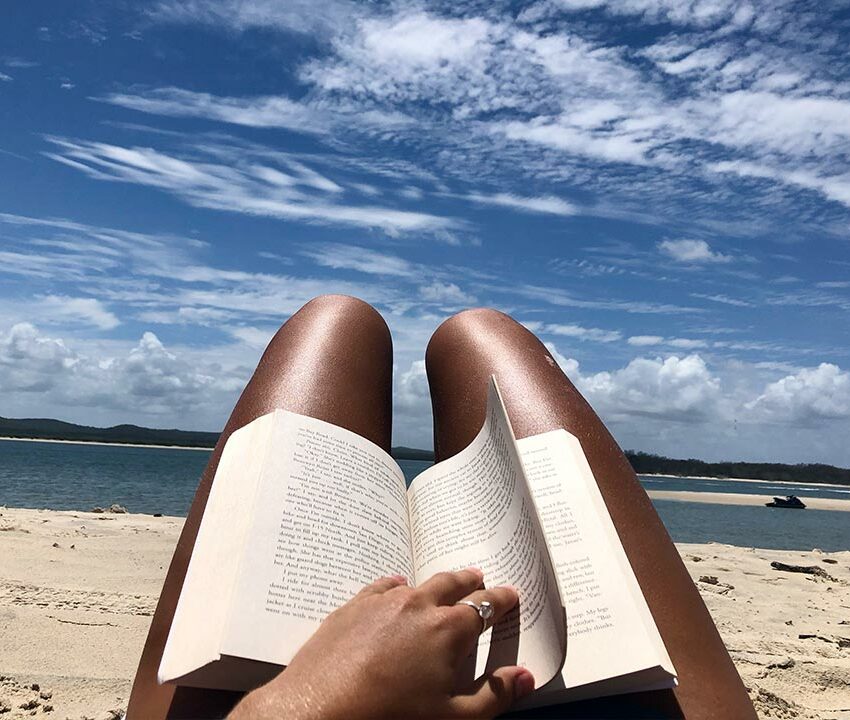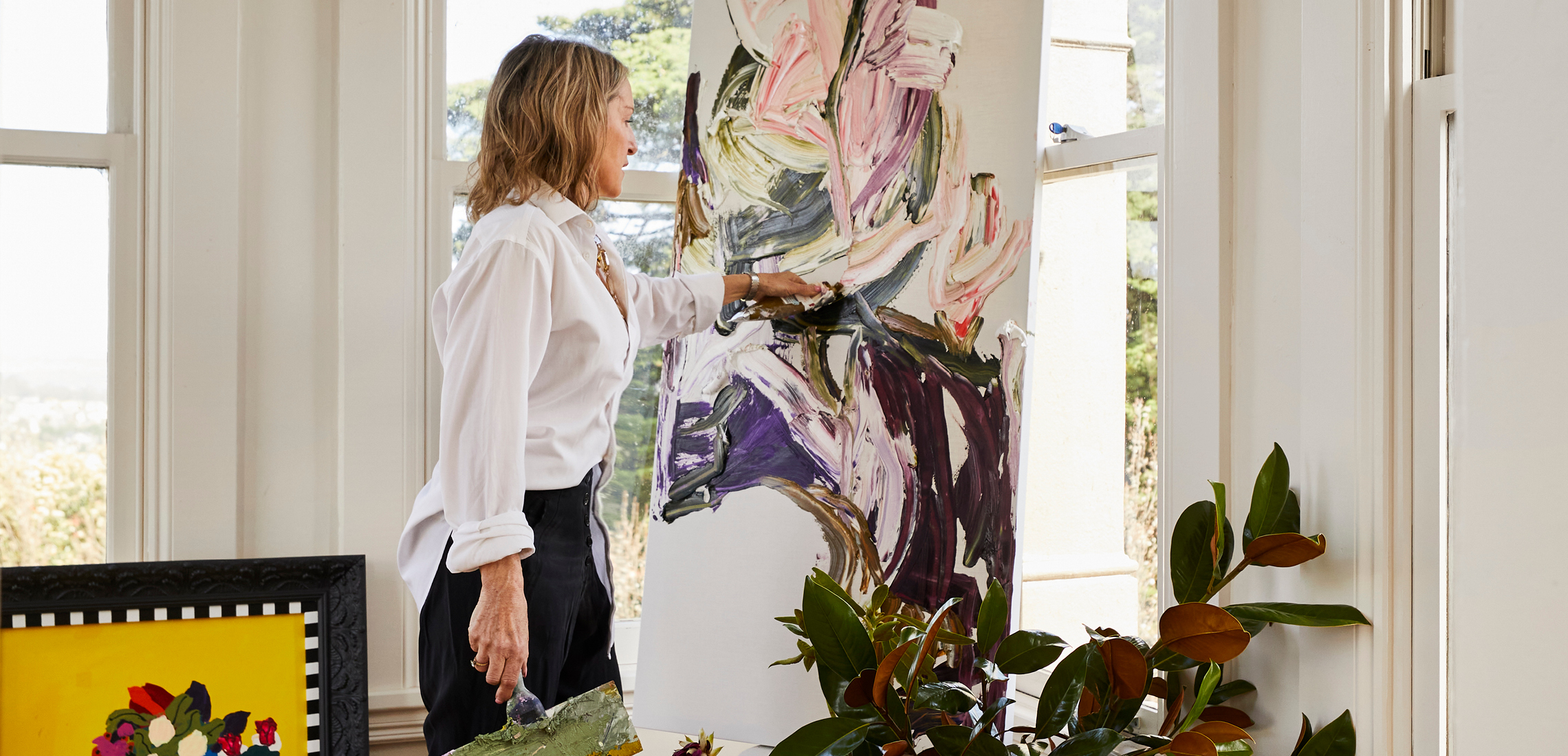
In The Studio With Artist Kerry Armstrong
Painting outside the lines
We sat down with Kerry Armstrong, a self-taught Abstract Expressionist and the visionary behind The Studio Gallery Group to chat all about her journey as an artist. In this Q&A, Kerry opens up about a life-altering diagnosis that ignited her passion for art and discusses the beautifully chaotic creative process that fuels her work.
Hi Kerry! Thanks so much for taking the time to chat with us. To begin, can you tell us a little bit about yourself?
I am a self-taught Abstract Expressionist and Gallery Founder/Director of The Studio Gallery Group. I live with my husband and business partner Michael with our myriad of beloved animals and beautiful old home on 20 acres in Harkaway. We have six children between us, Brady Bunch style, and our two daughters work alongside us in our business. I am a passionate equestrian actively working with a few of Australia’s elite show riders and ticking off major wish list items! I absolutely adore my horses and currently have six although a few extra wouldn’t hurt.
Can you tell us about your journey as an artist? How did you discover your passion for Abstract Expressionism?
I was working in the corporate world in software 12 years ago as an Account Director and discovered I had a brain tumour that was thought to be benign, however, inoperable. This was a particularly interesting pivotal time in my life where my greatest fear was no longer failure, but missing the calling to act on my strong instincts to paint professionally as an Expressionist. I resigned from my career in the lead-up to meeting with a leading specialist surgeon who considered my tumour to be in a very awkward position however, an operation to remove was doable. My running start in painting has never faded, I never look back and the bear always chases me. It’s proven to be a healthy dynamic in my world.
Can you walk us through your creative process? How do you prepare for a new piece, and what inspires your colour palette and composition?
I feel I have synergetic tendencies meaning my brain processes music, colour, and movement in a very similar way and therefore my approach to painting is maybe to some unorthodox. Colour to me has a distinct taste, a 360 energy in terms of its value and almost a natural numerical sequence to it when I paint. I never plan a work or think about the end result, I do however need to keep a good pulse on my creative flow, when I’m “on” I paint very quickly so I need a great deal of materials in store to potentially dance with on that day. Music plays an enormous part in my flow. I never paint without it and tend to have repetitive phases. Right now I’m obsessed with Pavarotti at full volume. My emotional response is so strong to classical music – I know to start when the tears flow. When I’m in non-painting mode, I have loads of work to attend to in our business, Studio Gallery Group, now five galleries in three states of Australia.
You mention capturing “episodic glimpses” of your life in your work. Can you elaborate on what you mean by this, and how you choose which moments to depict?
I sometimes paint ahead in my life, meaning I am feeling out and actualising future aspects. A good example of this is the Paddocks for Ponies series of works around five years ago where I was involuntarily planning out what is now our life on an equestrian property. I feel, see, and experience glimpses of my life almost in cutouts when painting, sometimes even my sense of smell is aroused to stir deep childhood memories. It’s a wonderful experience and I’m very grateful to finally understand myself a little better through this process.
How do you balance spontaneity with intention in your creative process?
Spontaneity always wins with me. I’m not looking for a balance, the magic evaporates if examined too closely. If I’m way too left-brained in my studio or conscious of thoughts of outcome, I much prefer to stop painting.
Your work explores themes of self-understanding and growth. Can you discuss how your art has helped you navigate personal challenges and emotions?
Around the time of my brain tumour was a very deeply personal, creative ground. Real and true acceptance of mortal fear and the realisation that I was very alone was actually such a beautiful place to explore. I painted a series of works titled Just Before Sleep. Those works explored vulnerability, gratitude, and solitude and when I look back now, a beautiful view of my inner child. There’s a place where I finally landed emotionally via those works that accepted I was going to experience a life-changing surgical procedure. Being fully open to the consequences either way was the life-changing aspect even more than the operation. On each of those works, I felt strongly about writing the verse on the back “And when you come for me, just know, I am very small, just before sleep'”. I still find that very beautiful.
You mention feeling a sense of ‘otherness’ when observing your work. Can you elaborate on what you mean by this, and how it informs your artistic practice?
I refer to ‘otherness’ as my ability to project outside my physical life while observing my finished works. I love spending time with them and listening to the stories I feel they tell; this is how I title the work, sometimes the story or sense of deja vu comes to me whilst painting which is really enjoyable to feel such a strong connection.
How do you see your art evolving in the future? Are there any new themes or techniques you’re excited to explore?
I would dearly love to explore ceramics and have started to research the equipment and requirements in my studio – it’s such a beautiful art form. My work always evolves along its organic pathways. I feel as a 60-year-old I have accepted that it’s okay to paint with great beauty around me, like our garden and farm. I no longer concern myself with thoughts I held 12 years ago that anything perceived as pretty was passe or irrelevant. Relevance in the art world to me is being widely collected and appreciated, along with the self-growth that comes with being an artist. There’s nothing that makes me feel so grateful in life.
What do you hope viewers take away from your art, and how do you want it to resonate with them?
I ideally want them to feel something, it’s as simple as that. Expressionism is all about the dialogue with oneself, I never mind people asking for the meaning of a work, but my favourite experience is to hear how it affects them.
Are there any upcoming exhibitions or projects you’re working on that you’d like to share with us?
We’ve been working on some OS Exhibitions with our artists who are naturally ambitious for international exposure. We at Studio Gallery love working hard to facilitate career moments and passageways with and for our artists. We do hold an incredible number of solo exhibitions due to our huge geographical reach in Australia. Each and every one of those shows is such a tremendous amount of work in the studios from our artists and curating and facilitating these events is a massive ongoing focus for our team.
What’s one piece that makes you pinch yourself? Share the story behind its significance.
Last year I painted a work in dedication to a very dear relative who was, at the time, in the last phases of his life. I titled the work We Will See You In The Sky Again Sometime. It hangs in our home, very treasured and a keeper.





